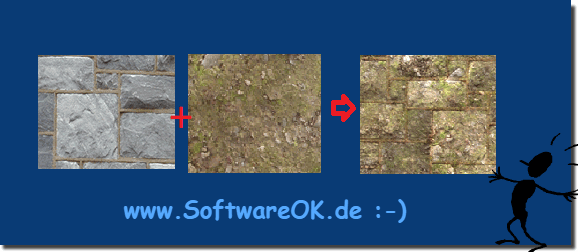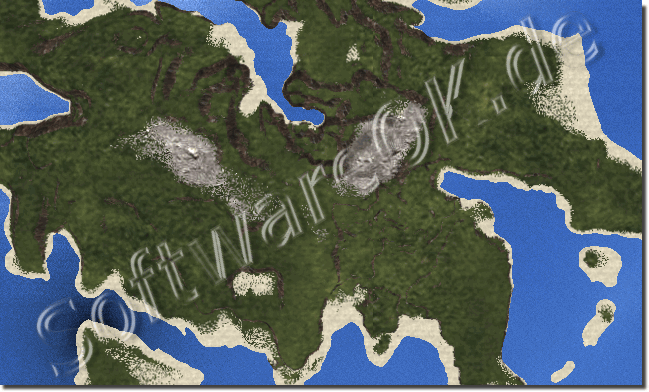The terms multitexture, multitexturing or texture mapping are actually known from OpenGL and DirectX!Many developers want to use some form of multi-texturing to potentially multiply or add texture number 1 and texture number 2, or mix them based on a factor such as an alpha value. Under OpenGL you can use a GLSL code to mix two textures based on an alpha value . Content:
1.) ... A simple example of the use of multitexturing in terrain representation!
|
| (Image-2) Multitexture, multitexturing (texture mapping)! |
 |
Texture Arrays is a new feature since DirectX 10 that allows you to activate multiple textures in the GPU at the same time. Previous methods, where only a single texture was active in the GPU, resulted in a lot of additional processing to constantly load and unload textures. Most people have avoided this problem by using texture aliases (loading a series of textures onto a large texture) and using only different UV coordinates. Texture aliases are no longer required with this new function.
3.) Technical information about multitexturing!
Multitexturing is a technique in computer graphics that allows multiple textures to be applied to an object or scene. This technique provides improved visual quality and enables a more realistic representation of surfaces. Here are some important points you should know about multitexturing:
Using multiple textures: Multitexturing allows multiple textures to be placed on an object at the same time. This means that different parts of an object can have different textures to create more realistic and detailed surfaces.
Layering: The different textures are placed on top of each other in layers. Each texture layer can represent different visual information such as color, reflection, shine or bump mapping.
Bump Mapping and Normal Mapping: Multitexturing is often used to implement bump mapping or normal mapping. These techniques create the illusion of spatial detail on a surface without changing the geometry of the object.
Level of detail and realism: Multitexturing allows you to increase the level of detail in a scene. Using multiple textures can add finer details, resulting in more realistic graphics.
Shader programming: In modern graphics applications, multitexturing is often used in conjunction with shader programming. Shaders are small programs that run on the GPU (Graphics Processing Unit) and enable complex calculations to display light and shadows.
Performance Considerations: Although multitexturing improves visual quality, it can also result in performance degradation. The calculations for multiple textures require additional computing power. Developers therefore have to find a compromise between visual quality and performance.
Application example: An example of multitexturing is the representation of landscapes in computer games. Different textures can be used for grass, stones, water, etc. Can be used to create a realistic and varied environment.
Overall, multitexturing provides a powerful way to create realistic graphics in 3D applications by cleverly combining multiple textures to create complex visual effects.
4.) Is multitexturing still up-to-date or already outdated?
Multitexturing is still relevant and is used in many modern graphics applications and games. However, developments in computer graphics have led to new technologies and approaches that are used alongside or instead of multitexturing. Some thoughts:Physically Based Rendering (PBR): Modern graphics engines are often based on PBR, a technique that realistically simulates the physical properties of materials. PBR often uses multiple textures, but not necessarily in the traditional multi-texturing sense. Instead, different textures can contain specific properties such as albedo, metallicity, roughness and normals.
Real-time ray tracing: Advances in real-time ray tracing technology enable more realistic simulation of light and shadow. This can reduce the need for complex multi-texturing techniques, as many visual effects can be achieved through the physically correct calculation of light.
Material systems and shader programming: Modern graphics applications often use advanced material systems and shader programming. These approaches allow developers to create highly customizable visual effects that go beyond simple multitexturing.
Efficiency and performance: In some cases, multitexturing can be avoided for performance reasons, especially on hardware with limited resources, such as. B. mobile devices. Developers often have to find a compromise between visual quality and performance.
Although multi-texturing is no longer the only method for achieving visual effects, it still plays an important role in graphics programming. Many modern technologies incorporate multitexturing concepts and extend them to achieve more sophisticated visual results. Therefore, it can be said that although multitexturing is no longer the only method, it still remains a relevant and powerful technique in computer graphics.
FAQ 145: Updated on: 6 December 2023 08:00

